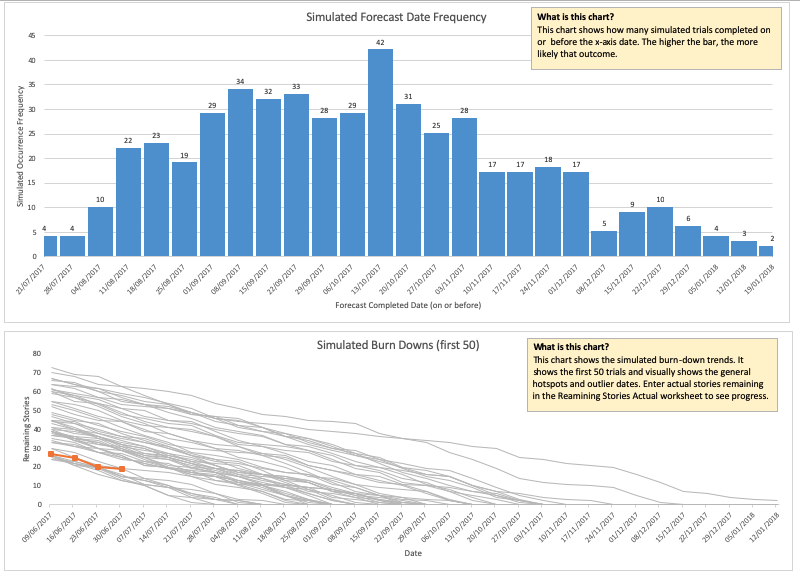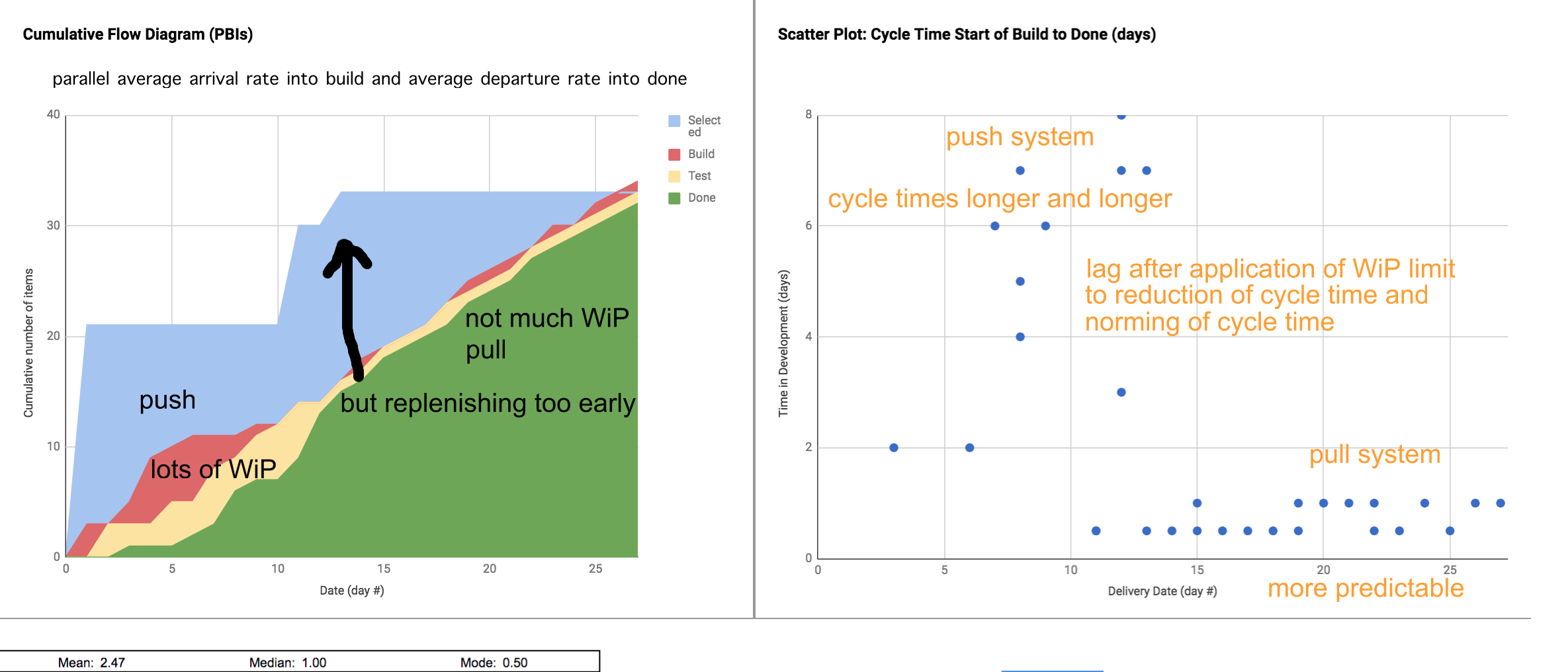I often wonder about the Trustpilot reviews straight after a workshop. Did I entertain? Did I perform? Were attendees satisfied? Are attendees inspired? It matters. I just think it matters more if the workshop made a difference to the work lives of attendees. I can't take credit. The client does the hard yards.
So I met up with a client contact who shall remain anonymous. And this is what she had to report....
At first, I thought Professional Scrum with Kanban is just for the Sprint Backlog. The penny dropped in class that I could use Kanban upstream and downstream of the Sprint Backlog. It makes sense. There is no point in having great in-Sprint cycle times if the cycle time from customer commitment to value delivered & confirmed is counted in months.
One year ago the teams were using story points, they were overcommitting, and daily meetings were daily status reports.
The good
This year, there is a multi-team workflow (Kanban Board is the visualization of same) with flow measures and a workflow per team with team members from my workshop. Alas, there is an expedite lane. For those who don't understand my disappointment in what I just said there, check out Daniel Vacanti: How an expedite request sunk the Titanic. The good news is that the client is having great results with Troy Magennis's free MonteCarlo probabilistic forecasting tools.

The client contact now regularly says "come back next sprint and we'll be more accurate". This year value is being delivered more frequently with higher customer satisfaction.
I'm doing myself out of a job here, but she also said new team members picked up Scrum with Kanban from their colleagues. They didn't need training. What I didn't like hearing so much was that Kanban was being used for "out of control stuff", I guess Kanban is a coping strategy, whilst protecting the Sprint Goal in Scrum, one can decide based on flow measures whether the team can cope with taking in a new Product Backlog Item.
The bad
New teams had no colleagues to learn from and were not trained. The attitude from those teams was "we have Jira, Kanban feels like overkill". No one in those new teams looked at the cumulative flow diagram or other useful charts to assess flow.

The ugly
And there was a lack of a full-time Scrum Master. In my experience, someone needs to be worried about flow and supporting measures & charts. This is because Kanban adds more evidence to Scrum decision making. Like for example, we have 4 days left in the Sprint and the Sprint Goal is not at risk - can we take in this extra Product Backlog Item? We can use an up to date Service Level Expectation (SLE) to help address that question whilst preserving a done increment. For example, our SLE says we can deliver a Product Backlog Item in 3 days or less 85% of the time, so does this PBI feel like it fits our SLE?
Bottom line for that client
Professional Scrum with Kanban dramatically improves performance for teams that get how Scrum with Kanban works. Like anything, a little knowledge can be dangerous. Here is a report from one individual at that client...
I learned a lot and I'm continuing to learn, one of the most recent lessons was how properly implemented Agile Scrum and Kanban can increase the productivity and provide important insights into the velocity of the team.
I believe that introducing Kanban was also one of the best things for the team in terms of encouraging us to evolve, to take on new tasks and to work more as a team.
My personal opinion is that if I continue to take on new tasks, work together with the team in the Kanban spirit, then my career is definitely heading in the right direction.
